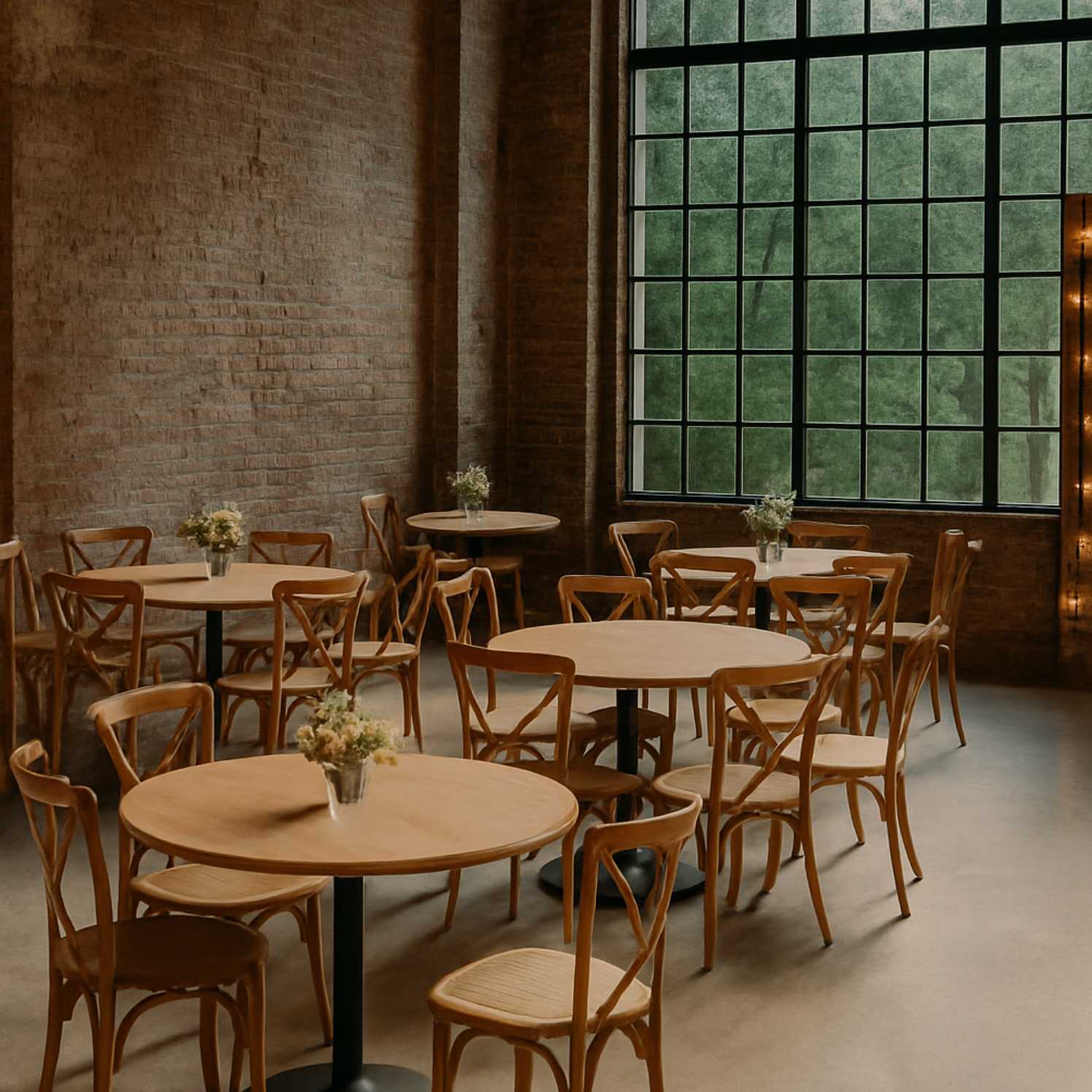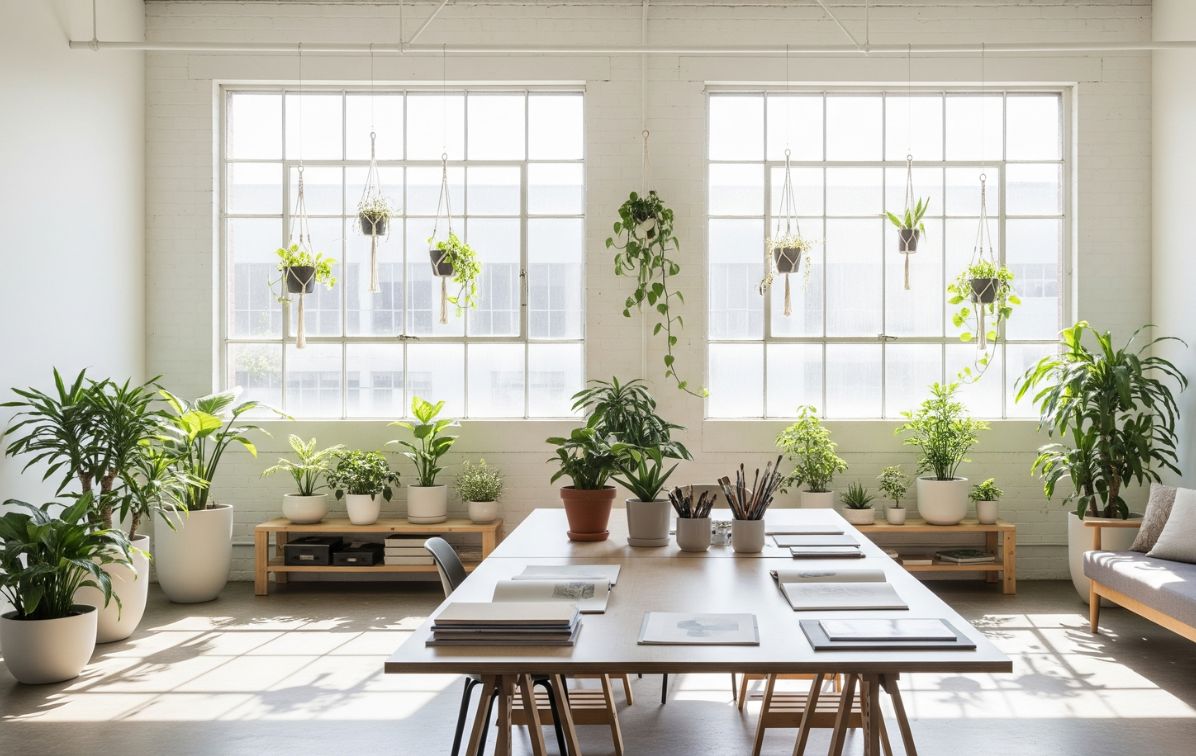Experiential Marketing Starts with the Right Venue: A CMO’s Guide
This CMO’s guide explores how the right space drives engagement, content creation, and brand impact.

In a marketing landscape where attention spans are short and competition is fierce, the brands that win are the ones that connect on a human level. And few strategies are as powerful for building real connections as experiential marketing. It transforms passive audiences into active participants by immersing them in branded experiences that resonate long after the campaign ends. But here’s the catch: no matter how brilliant your campaign concept is, its success hinges on one foundational element—the venue.
Welcome to your ultimate CMO's guide on how choosing the right venue makes or breaks your experiential marketing campaign.
Why Venue Selection Matters in Experiential Marketing
The venue isn’t just a container for your event. It is part of the experience. It shapes your audience’s first impression, dictates the mood, and provides the backdrop for storytelling. Whether you're launching a product, hosting a pop-up, or creating an immersive brand world, your choice of venue can elevate your concept—or flatten it.
Here are a few ways the venue directly influences your success:
- Brand Perception: A rooftop loft sends a very different message than a gritty warehouse. Choose a space that reflects your brand identity.
- Engagement Opportunities: Certain venues allow for more creative freedom, interactivity, and tech integration.
- Logistics: From foot traffic to access to power, bathrooms, and sound equipment, the wrong venue can bottleneck your execution.
- Content Creation: Today’s campaigns must be content-ready. A visually compelling venue helps you win across Instagram, TikTok, LinkedIn, and beyond.
Key Venue Types for Experiential Campaigns
Let’s break down the venue types most commonly used in marketing activations and when to use them:
1. Pop-Up Retail Spaces
Perfect for product launches, seasonal activations, or creating a sense of exclusivity. These venues thrive in high-foot-traffic areas like city centers or shopping districts.
Pros: Built-in audience, flexible leases, retail-ready setup.
Best For: DTC brands, product demos, influencer activations.
2. Industrial Spaces & Warehouses
These raw, open spaces are blank canvases that allow for maximum creativity. Great for immersive brand experiences, VR/AR activations, or multi-sensory installations.
Pros: Large capacity, flexible build-out, edgy aesthetic.
Best For: Tech, fashion, and lifestyle brands.
3. Art Galleries & Museums
These venues provide prestige and a curated, cultural vibe. Ideal for brands that want to associate with art, innovation, or exclusivity.
Pros: High-end audience, built-in ambiance.
Best For: Luxury, beauty, and premium product brands.
4. Outdoor Venues & Rooftops
Nature or skyline views can create memorable moments. These spaces work well for summer campaigns, wellness brands, or any event wanting a laid-back vibe.
Pros: Photogenic, atmospheric, relaxed energy.
Best For: Beverage brands, lifestyle products, hospitality.
5. Studio Rentals
Ideal for photo/video content capture and influencer events. Studio spaces offer high production value with controlled environments.
Pros: Turnkey setups, lighting, sound, and grip gear.
Best For: UGC campaigns, branded shoots, livestreaming activations.
Aligning Venue with Your Campaign Objectives
As a CMO, you must reverse-engineer your venue choice from your goals:
- Driving Foot Traffic: Go with high-visibility locations near retail corridors or transit hubs.
- Influencer-Ready Content: Choose spaces with architectural elements, murals, or rooftop views.
- High-Tech Integration: Look for venues with strong power infrastructure, Wi-Fi, and load-in access.
- Intimate Conversations: Opt for smaller, acoustically sound venues with lounge-style seating.
Ask yourself:
- What feeling do I want my audience to leave with?
- What story is this space telling before we even activate?
- Can we scale this space into other cities?
How to Source the Right Venue
Finding the perfect space can be a campaign in itself. Here are platforms and strategies for CMOs and marketing teams:
1. Studio Rental Platforms:
Sites like Studio Supply make it easy to book fully-equipped creative studios in major markets.
2. Event Space Marketplaces:
Use platforms like Peerspace, Giggster, and Splacer to browse unique spaces by type, size, and location.
3. Location Scouting Services:
Professional scouts have deep knowledge of hidden-gem spaces, permitting processes, and what will photograph best.
4. Brand Partnerships:
Sometimes the best venues aren’t for rent. Collaborate with like-minded brands to co-host in shared environments (e.g., showrooms, lobbies, or HQs).
5. Custom Builds:
If your budget allows, build your own venue—containers, domes, or modular pop-ups give total control.
The Role of Visual Storytelling
In the social-first era, your venue must be photogenic and content-optimized. That means:
- Clear sightlines for video crews
- Ample natural light or production lighting rigs
- Modular areas for multiple vignettes or activations
- Strategic placement of branding and calls-to-action
The more shareable your space, the more ROI you get from organic impressions.
Common Mistakes to Avoid
- Choosing Based on Aesthetics Alone: Cool-looking doesn’t mean functional.
- Overlooking Load-In Logistics: Make sure your team and vendors can access the site efficiently.
- Neglecting Permits or Insurance: Always check zoning laws and venue policies.
- Underestimating Weather (Outdoors): Always have a backup plan.
- Forgetting Content Goals: Every inch of space should tell a part of your story or support your content strategy.
Real-World Brand Examples
- Glossier's LA Pop-Up was styled like a dreamy pink apartment, perfectly reflecting the brand’s minimal, beauty-first ethos. The space itself became part of the brand's content engine.
- Red Bull’s Music Academy events in abandoned buildings and industrial lofts matched their edgy, underground music positioning.
- Nike's "House of Innovation" flagship stores act as hybrid venue/experience spaces with interactive installations, personalized shopping, and exclusive events.
Final Checklist for CMOs
Before you sign on the dotted line, ask your team:
- Does this venue enhance or compete with the story we want to tell?
- Can it accommodate our production needs?
- Will it attract the right audience?
- Is it logistically sound for team, vendors, and attendees?
- Can we leverage the space across marketing channels?
Conclusion: Experience Is the New Exposure
The right venue doesn’t just house your campaign—it becomes your campaign. In experiential marketing, space is storytelling. Whether you're after virality, foot traffic, press coverage, or content creation, it all starts with where you show up.
So as you plan your next brand moment, remember this: real-world magic begins with real-world places. And for the brands that choose their venue with intention, the impact goes far beyond four walls.
Need a content-ready studio space for your next brand shoot or event? Check out Studio Supply and browse top-tier locations built to perform on every platform.
Explore studios to rent
Find and book creative spaces for all of your content creation needs, from video production to podcasting, photo shoots, and more!
Browse Spaces
.jpg)
.jpg)
